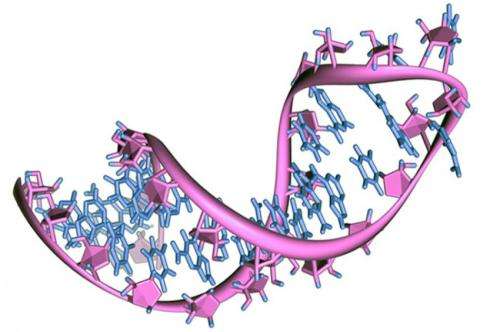Scientist exposes new world of forensic analysis

Over the past 20 years DNA evidence has become the foundation upon which forensic investigation is built. The identification of traces of blood, saliva and other bodily fluids places a suspect directly at the site of a crime, and can be the difference between a guilty or not guilty verdict in court.
But as new identification technologies emerge at an ever quickening pace, new questions are being raised as to not only the efficacy of these technologies, but also their implications on privacy, civil liberties and validity.
A recent assessment published by UTS Associate Professor of Forensic Biology Peter Gunn has attempted to grapple with these complex issues. "The nucleic acid revolution continues – will forensic biology become forensic molecular biology?" has become one of the most read articles of the Frontiers in Genetics March edition.
Professor Gunn, head of the Forensic Biology program at UTS and the first person in the Southern Hemisphere to do in-house DNA testing in a criminal case, says that while DNA provides an accurate biological profile, it's unable to provide further information to forensic teams on matters like physical or health characteristics.
Newer technologies, such as the analysis of variable nucleic acids within cells ("epigenetics"), offer much more in the way of information – and in his report, co-authored with UTS's Claude Roux and Simon Walsh of the Australian Federal Police, Gunn said these emerging technologies will allow for further inferences into the nature and perpetrator of a crime.
"We start to tell not just who was the person,for example, but we can start to tell the characteristics of that person. That includes their ethnicity, their eye and hair colour, what sort of diseases they may be carrying, what sort of background they may have, are they smokers, are they overweight and the like," Professor Gunn said.
"So the potential is there to build a picture of a person who left material at the scene of a crime other than just a DNA profile."
This is done through investigation of the RNA makeup within a cell, as distinct from DNA evidence. While DNA is like a "master blueprint" of a person's genetic code, RNA – ribonucleic acid – is described by Gunn as like "working copies" of that blueprint.
"In different cells in your body, different parts of your DNA are being used by the working copies of RNA. And those RNA copies are actually controlling what's happening in the cells," he said.
"But each cell has its own expression of RNA, dependent on what its job in the body is, and they tell you much more about what's happening at the working level of the person."
However, the use of nucleic acid technologies still remains rather challenging in a criminal context. While DNA is now long-established as a verifiable form of evidence, newer technologies are yet to attain the requisite levels of scientific and judicial acceptance to stand up in a court of law.
As well as this, the concerns of civil libertarians have been raised regarding the collection of genetic information that has the potential for racial or health profiling.
Gunn said that, looking forward, making nucleic acid evidence verifiable – and allaying the concerns of privacy commissioners – will be a priority.
"These will probably never be the routine methods used by investigators, they'll always be specialist investigations. But the challenge is to make them robust enough that they can be defended in court, can be presented with confidence, and can be defended successfully."
More information: Frontiers in Genetics, www.frontiersin.org/books/DNA_ … rensic_inference/284
Provided by University of Technology, Sydney



















